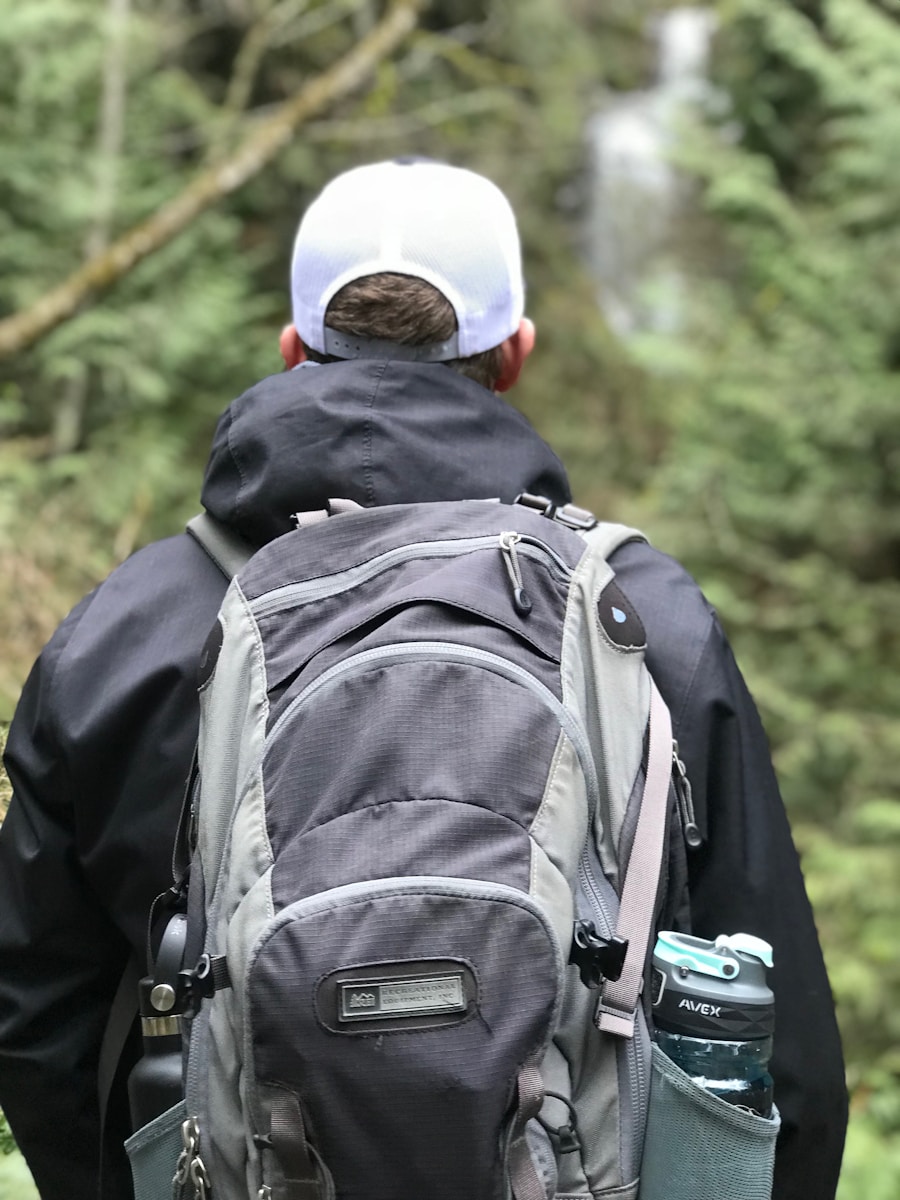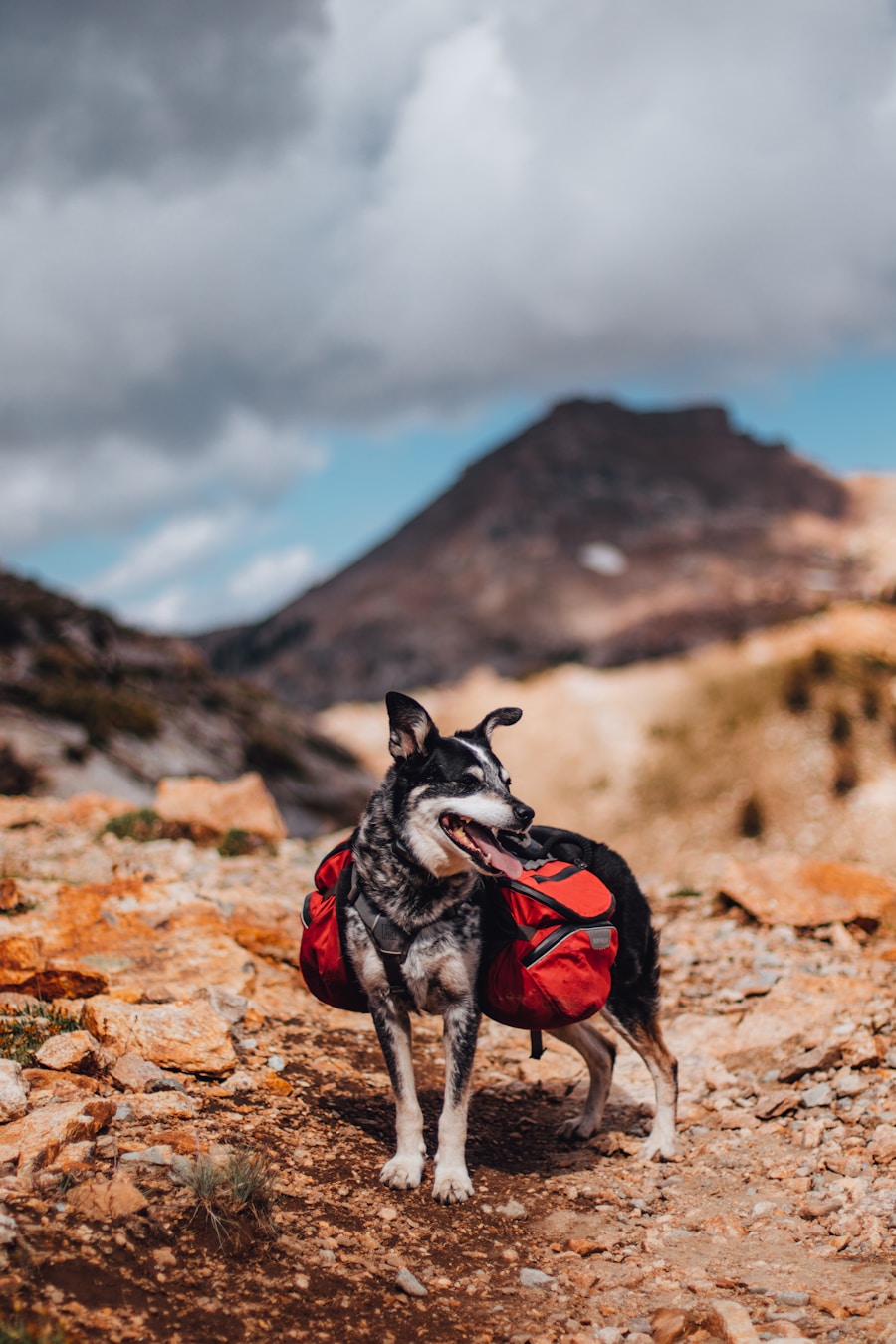The significance of a proper fit in backpacks cannot be overstated, particularly for outdoor enthusiasts, hikers, and travelers. A well-fitted backpack is essential for comfort and efficiency during any journey, whether it’s a day hike or an extended trek. When a backpack fits correctly, it distributes weight evenly across the body, reducing strain on the back, shoulders, and hips.
This balance is crucial for maintaining good posture and preventing fatigue, which can lead to discomfort or injury over time. A poorly fitted backpack, on the other hand, can cause chafing, muscle strain, and even long-term damage to the spine if worn for extended periods. Moreover, the right fit enhances overall performance.
When a backpack is tailored to the individual’s body shape and size, it allows for greater freedom of movement. This is particularly important in activities that require agility and balance, such as climbing or navigating uneven terrain. A well-fitted backpack also minimizes the risk of shifting during movement, which can throw off a hiker’s center of gravity and lead to falls or accidents.
Therefore, understanding the importance of proper fit is not just about comfort; it is a fundamental aspect of safety and efficiency in outdoor activities.
Key Takeaways
- Proper fit is crucial for comfort and stability when wearing a backpack
- Measuring your torso helps ensure the backpack is the right size for your body
- Adjusting shoulder straps and hip belt is essential for distributing weight properly
- Load distribution and stability are key for preventing strain and injury
- Testing the fit with weight helps determine if the backpack is comfortable for long-term use
Measuring Your Torso
To achieve the perfect fit for your backpack, measuring your torso length is a critical first step. The torso length is defined as the distance from the prominent bone at the base of your neck (the C7 vertebra) to the top of your hip bones (the iliac crest). This measurement helps determine the appropriate size of the backpack frame that will sit comfortably on your body.
To measure accurately, stand straight with your back against a wall and use a flexible measuring tape. Place one end at the C7 vertebra and extend it down to the iliac crest, ensuring that the tape remains straight and taut. Once you have your torso measurement, it’s essential to consult the sizing charts provided by different backpack manufacturers.
Each brand may have slightly different sizing standards, so it’s crucial to refer to their specific guidelines. Some backpacks are designed with adjustable torso lengths, which can accommodate a range of measurements. This feature is particularly beneficial for those who may fall between sizes or have unique body shapes.
Understanding how to measure your torso correctly sets the foundation for selecting a backpack that will provide optimal support and comfort during your adventures.
Adjusting the Shoulder Straps and Hip Belt

After selecting a backpack based on torso measurements, the next step involves adjusting the shoulder straps and hip belt for a customized fit. The shoulder straps should be snug but not overly tight; they should contour to your shoulders without digging into your skin. When adjusting these straps, ensure that they are positioned so that they pull the pack close to your back while allowing for free movement of your arms.
A common mistake is to have the straps too loose, which can lead to excessive shifting of the pack during movement and increased strain on the shoulders. The hip belt plays an equally vital role in load distribution. It should sit comfortably on your hips, ideally resting on the iliac crest rather than your waist.
When properly adjusted, the hip belt should transfer most of the pack’s weight from your shoulders to your hips, allowing for better stability and reducing fatigue in your upper body. To adjust the hip belt, tighten it until it feels secure but not restrictive; you should still be able to move freely without feeling constricted. Many backpacks come with additional features such as load lifters or sternum straps that can further enhance fit and stability.
These elements should be adjusted according to personal preference and comfort.
Load Distribution and Stability
| Metrics | Value |
|---|---|
| Load Distribution | 85% |
| Stability Index | 92% |
| Weight Distribution | 75% |
| Center of Gravity | 78% |
Understanding load distribution is crucial for maximizing comfort and minimizing injury while carrying a backpack. A well-designed backpack will have multiple compartments and pockets that allow users to organize their gear effectively. By placing heavier items closer to your back and lighter items further away, you can maintain a lower center of gravity, which enhances stability during movement.
This principle is particularly important when traversing uneven terrain or navigating steep inclines. In addition to organizing gear effectively, ensuring that the load is balanced on both sides of the backpack is essential for maintaining stability. An unbalanced load can lead to muscle strain and discomfort over time, as one side of the body compensates for the weight on the other side.
Many modern backpacks come equipped with features such as compression straps that help stabilize the load by cinching down excess fabric and keeping items secure within the pack. Proper load distribution not only enhances comfort but also improves overall performance during outdoor activities.
Testing the Fit with Weight
Once you have adjusted your backpack for a proper fit, it’s essential to test it with weight before embarking on a long journey. Start by loading your backpack with gear that mimics what you would typically carry on a hike or trip. This could include water bottles, food supplies, clothing layers, and any other essentials you plan to take along.
By testing with weight, you can assess how well the pack fits under realistic conditions and make any necessary adjustments. During this test phase, pay attention to how the weight feels on your body. Walk around in a safe environment—preferably one that simulates outdoor conditions—while wearing the loaded backpack.
Notice if there are any pressure points or areas where the pack feels uncomfortable. If you experience any discomfort in your shoulders or hips, revisit your adjustments to ensure that both the shoulder straps and hip belt are properly fitted. Additionally, consider walking up and down stairs or inclines to see how well the pack maintains its position on your back during dynamic movements.
Common Fit Issues and Solutions

Despite careful measurements and adjustments, some common fit issues may still arise when using a backpack. One prevalent problem is shoulder strap slippage, which can occur if the straps are not adequately adjusted or if they are too wide for your shoulders. To remedy this issue, consider using a pack with narrower shoulder straps or adjusting them closer together if possible.
Additionally, some backpacks feature anti-slip materials on the straps that can help keep them in place. Another common issue is discomfort from an improperly fitted hip belt. If you find that the hip belt rides up or feels too loose during movement, it may be necessary to adjust its position or tighten it further.
In some cases, adding padding or using a different style of hip belt may provide additional comfort and support. It’s also worth noting that certain backpacks are designed specifically for different body types; if you consistently experience fit issues, exploring options tailored for your body shape may yield better results.
Choosing the Right Size Backpack
Selecting the right size backpack involves more than just torso measurements; it also requires consideration of intended use and capacity needs. Backpacks come in various sizes ranging from daypacks designed for short excursions to larger multi-day packs meant for extended trips into the wilderness. Understanding how much gear you typically carry will help determine which size is most appropriate for your needs.
For day hikes or short outings, a smaller pack with a capacity of 20-30 liters may suffice, providing enough space for essentials like water, snacks, and a first-aid kit without being cumbersome. Conversely, if planning an overnight trip or longer adventure requiring camping gear and additional supplies, a larger pack with a capacity of 50 liters or more may be necessary. It’s essential to strike a balance between size and weight; while larger packs offer more storage space, they can also add unnecessary weight if not filled appropriately.
Seeking Professional Assistance
If you find yourself overwhelmed by the process of selecting and fitting a backpack, seeking professional assistance can be invaluable. Many outdoor retailers offer fitting services where knowledgeable staff can guide you through measuring your torso, adjusting straps, and selecting an appropriate pack based on your specific needs and preferences. These professionals often have extensive experience with various brands and models and can provide insights into which packs perform best under different conditions.
Additionally, participating in workshops or clinics offered by outdoor organizations can enhance your understanding of proper fit techniques and gear selection strategies. These educational opportunities often include hands-on experiences where participants can try on different packs while receiving expert advice tailored to their individual requirements. By investing time in professional assistance, you can ensure that you choose a backpack that not only fits well but also enhances your overall outdoor experience.
When considering how a hiking backpack should fit, it’s important to also think about the best time to travel to certain destinations. For example, if you’re planning a trip to Lake Como, you’ll want to know the seasonal weather patterns to ensure you pack the right gear. Check out this article on the
